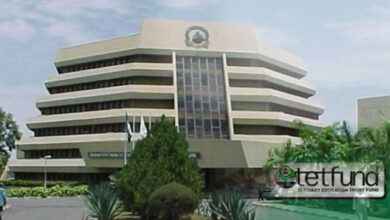
By Prof. Mohammed Al-Amin
IN 2024, during the inaugural edition of the Subnational Climate Governance Performance Rating and Ranking (SCGPR), Katsina State placed 25th with a modest score of 64 points.
At the time, this outcome was neither acceptable nor reflective of the State’s capacity or potential in climate governance. So, we recalibrated.
One year later, Katsina rose dramatically to 2nd position with an impressive 310 points — a 23-place leap, representing one of the fastest governance transformations in Nigeria’s recent history.
This extraordinary turnaround was driven by strategic adoption of the SCGPR benchmarking framework, which provided actionable insights on our institutional gaps and a clear roadmap for improvement. The ranking did not merely evaluate us — it guided us.
From Feedback to Reform
Katsina’s growth in climate governance has been remarkable and deliberate. The SCGPR offered a structured mirror through which we identified and addressed weaknesses in institutional arrangements, budgetary processes, and implementation mechanisms.
Much of the credit belongs to His Excellency, Governor Dikko Umar Radda, whose vision to leverage climate action for development and poverty reduction became the cornerstone of the Katsina Green Growth Agenda.
Since adopting this evidence-based approach, over 1.5 million residents across 22 local government areas have benefited from improved environmental services, expanded access to solar power, and enhanced agricultural productivity.
Institutional Overhaul and Policy Innovation
Guided by the SCGPR performance indicators, we established climate governance units across 12 ministries and launched coordination platforms involving all 34 local governments. This framework streamlined decision-making and improved accountability.
Over 300 civil servants have been trained in climate policy, while local councils now integrate climate budgeting into their annual plans. These efforts have attracted ₦2.4 billion in external technical assistance, supporting projects in rural electrification, waste management, and afforestation.
The passage of the Katsina State Climate Resilience and Green Economy Policy (2024) marked a new era. Through this policy, we aligned with Nigeria’s Nationally Determined Contributions (NDCs) and the Sustainable Development Goals (SDGs), positioning climate action as a tool for economic inclusion.
Our policy aims to mobilize ₦6 billion in green-sector investments and create 2,000 new jobs in clean energy and sustainable agriculture.
Results on the Ground
These reforms are already yielding tangible socio-economic results. About 1,800 smallholder farmers have received solar irrigation support, increasing dry-season yields by up to 25% while reducing dependence on diesel pumps.
The Solar for All Initiative has connected over 150 rural schools and health centres to reliable solar power, improving education and healthcare for more than 250,000 people.
Our community tree-planting campaign, inspired by the Ranking’s citizen engagement pillar, has planted 1.2 million seedlings across the state, mitigating desert encroachment while creating jobs for youth and women cooperatives.
Climate Finance and Transparency
Following insights from the 2024 SCGPR, which flagged weak climate financing, Katsina increased climate-related allocations by 30% in 2025 and introduced a framework for Green Bonds projected to raise ₦10 billion over the next three years.
These funds will finance climate-smart agriculture, flood management, and renewable energy expansion.
We also launched the Katsina Climate Watch, a digital transparency platform tracking climate projects and providing public education. Since inception, it has reached over 500,000 residents online and mobilized 10,000 community volunteers.
This innovation, inspired by the SCGPR’s Online Visibility pillar, has turned climate awareness into a people-driven movement and improved collaboration between government, civil society, and development partners.
Measured Impact Across All Pillars
Katsina’s progress cuts across all five SCGPR thematic areas:
Climate Institutional Arrangements: 24 points (32nd) → 110 points (2nd)
Policy and Legal Frameworks: 5 points (30th) → 50 points (4th)
Budgetary Allocation to Climate Change Projects: 5 points (32nd) → 60 points (2nd)
Project Implementation and Monitoring: 15 points → 55 points
Online Visibility: 15 points → 35 points
These are not just numerical jumps — they represent solar-powered schools, cleaner communities, thriving small businesses, and empowered farmers.
Looking Ahead
While we celebrate this milestone, we view it as a baseline — not a ceiling. Katsina remains committed to building a climate-smart, inclusive, and resilient future.
We will continue to deepen collaboration with federal institutions, development partners, and civil society to move from second to first — not for prestige, but to sustain the development momentum that improves lives across the state.
We acknowledge the Federal Ministry of Environment’s Department of Climate Change, Professor Chukwumerije Okereke, and the Society for Planet and Prosperity (SPP) for driving this pioneering initiative, which has provided an evidence-based pathway for subnational climate governance reform across Nigeria.
Under the visionary leadership of Governor Dikko Umar Radda, Katsina State is determined to consolidate its progress and set new standards in the 2026 Climate Governance Ranking.
***Prof. Mohammed Al-Amin, Special Adviser on Climate Change to the Governor of Katsina State




